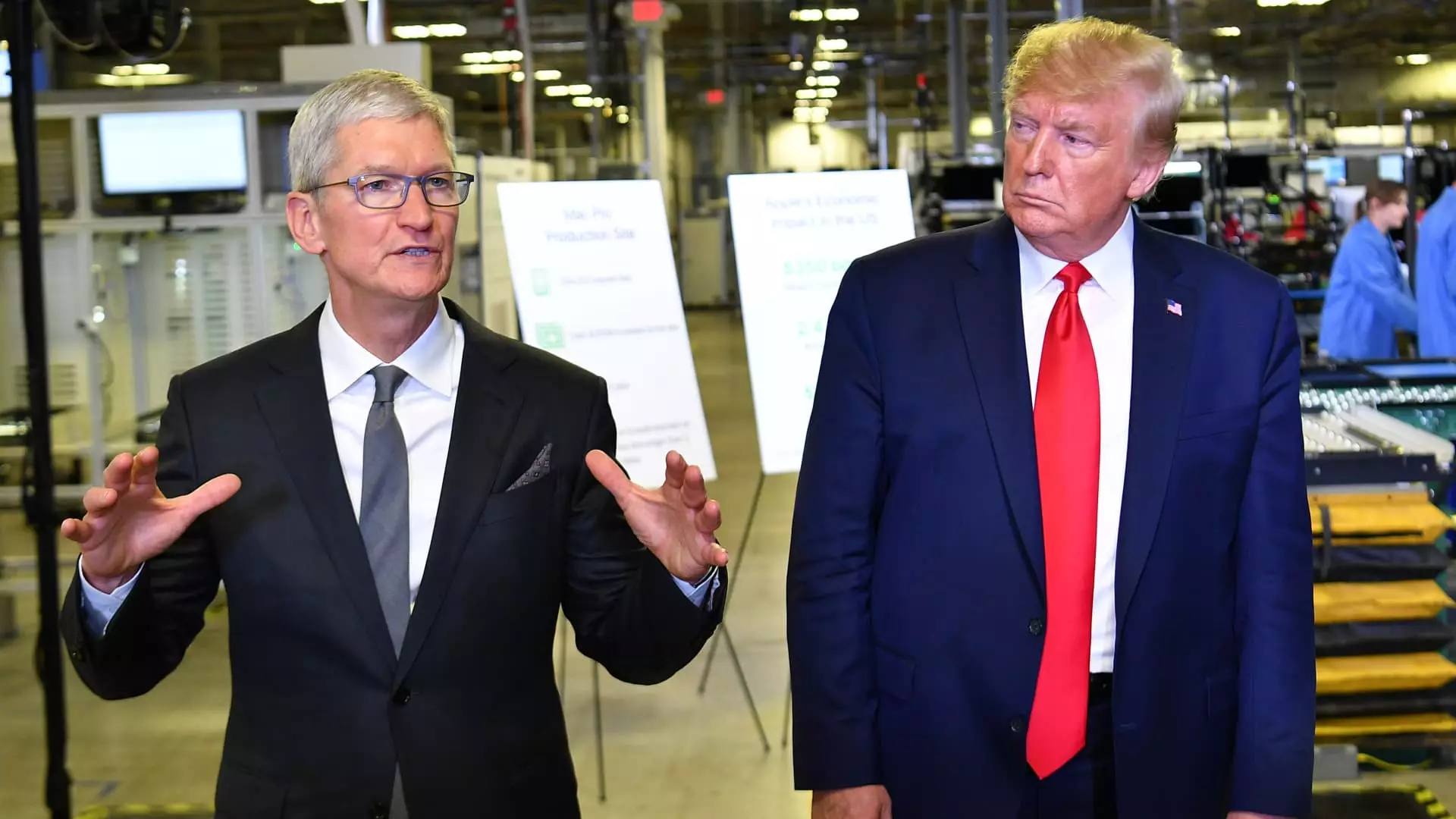Recent comments from former President Donald Trump concerning Apple Inc. have reignited debates around the company’s manufacturing strategies and its reliance on foreign labor. Trump publicly stated that Apple might be subjected to tariffs exceeding 25% on iPhones produced outside the United States. His remarks, posted on Truth Social, emphasized his long-standing expectation that iPhones sold domestically should be manufactured in the U.S., rather than in countries like India or China. This insistence poses a significant challenge to Apple, a corporation that has heavily invested in overseas production to maintain competitive pricing.
The implications of Trump’s demands are unsettling. Apple’s iPhones are mainly manufactured in China, a practice that has contributed to the company’s robust profit margins. Shifting production to the U.S. isn’t just a logistical challenge; it’s a financial one too. Analysts predict a considerable increase in the retail price of iPhones—estimates suggest a potential rise to approximately $3,500 if production were conducted domestically. This steep price would undoubtedly alienate numerous consumers accustomed to paying around $1,000 for the latest models.
Market Reactions and Investor Sentiment
Investor sentiment reacted swiftly to Trump’s announcements, with Apple shares falling around 3% in premarket trading. Such a drop illustrates a tangible concern among investors about the sustainability of Apple’s business model under increasing political pressure. Trump’s strategy seems not just focused on Apple, but is indicative of a broader trade war mentality that has seen other major corporations, like Walmart, come under scrutiny.
This political landscape presents a complex environment for Tim Cook. While Apple’s leadership has maintained a cordial relationship with Trump in the past—highlighted by a $1 million donation to his inauguration fund—there’s a cautious back-and-forth dynamic at play. The last time tariffs threatened Apple’s operations, they were ultimately excluded from the final trade deal due to Cook’s strong rapport with the former president. Now, however, that relationship appears to be strained as Apple faces mounting demands for domestic production.
The Balancing Act of Global Manufacturing
Apple’s current strategy of diversifying its production to countries like India reflects a broader understanding of changing trade dynamics and relationships. The company is reportedly investing in a $500 billion U.S. development plan, which includes domestic manufacturing in Houston. However, this initiative will not be an overnight solution to the reliance on foreign assembly lines, especially amidst fluctuating trade policies.
Furthermore, Foxconn, a primary assembly partner of Apple, is pouring $1.5 billion into expanding its Indian facilities, showcasing the tech giant’s commitment to enhancing production capabilities outside China. Yet, this pivot may not fully appease Trump’s demands. The legal framework for implementing tariffs on a specific consumer product isn’t clear, adding another layer of uncertainty to Apple’s operations.
Challenges in the Chinese Market
As if tariffs weren’t enough, Apple faces additional challenges from a declining demand in China. The company has recently ramped up trade-in incentives for iPhones in the region, signaling eagerness to maintain its foothold. These initiatives may be inadequate in combating overwhelming competitive pressures and an evolving political climate. Consumer preferences are shifting, and Apple must respond to a market that is increasingly local in nature.
The confluence of production challenges, external political pressures, and shifting consumer dynamics creates a precarious situation for Apple. The stakes couldn’t be higher; not only is the company grappling with the prospect of rising costs and tariffs, but it also risks alienating consumers if prices escalate significantly.
Each of these factors compels a re-examination of Apple’s business model and competitive strategies. The need for innovative solutions that place Apple in a position to lengthen its longevity against macroeconomic challenges has never been more pronounced. The coming months will be pivotal for Apple, as it must navigate a treacherous landscape littered with tariff threats, heightened consumer expectations, and geopolitical tensions.

